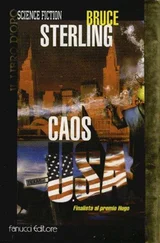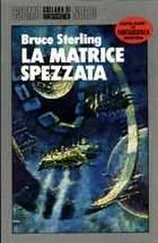Bruce Sterling - Essays. FSF Columns
Здесь есть возможность читать онлайн «Bruce Sterling - Essays. FSF Columns» весь текст электронной книги совершенно бесплатно (целиком полную версию без сокращений). В некоторых случаях можно слушать аудио, скачать через торрент в формате fb2 и присутствует краткое содержание. Жанр: Фантастика и фэнтези, на английском языке. Описание произведения, (предисловие) а так же отзывы посетителей доступны на портале библиотеки ЛибКат.
- Название:Essays. FSF Columns
- Автор:
- Жанр:
- Год:неизвестен
- ISBN:нет данных
- Рейтинг книги:3 / 5. Голосов: 1
-
Избранное:Добавить в избранное
- Отзывы:
-
Ваша оценка:
- 60
- 1
- 2
- 3
- 4
- 5
Essays. FSF Columns: краткое содержание, описание и аннотация
Предлагаем к чтению аннотацию, описание, краткое содержание или предисловие (зависит от того, что написал сам автор книги «Essays. FSF Columns»). Если вы не нашли необходимую информацию о книге — напишите в комментариях, мы постараемся отыскать её.
Essays. FSF Columns — читать онлайн бесплатно полную книгу (весь текст) целиком
Ниже представлен текст книги, разбитый по страницам. Система сохранения места последней прочитанной страницы, позволяет с удобством читать онлайн бесплатно книгу «Essays. FSF Columns», без необходимости каждый раз заново искать на чём Вы остановились. Поставьте закладку, и сможете в любой момент перейти на страницу, на которой закончили чтение.
Интервал:
Закладка:
Project Babylon was Bull's grandest vision, now almost within his grasp. The Iraqi space-launcher was to have a barrel five hundred feet long, and would weigh 2,100 tons. It would be supported by a gigantic concrete tower with four recoil mechanisms, these shock- absorbers weighing sixty tons each. The vast, segmented cannon would fire rocket-assisted projectiles the size of a phone booth, into orbit around the Earth.
In August 1989, a smaller prototype, the so-called "Baby Babylon," was constructed at a secret site in Jabal Hamrayn, in central Iraq. "Baby Babylon" could not have put payloads into orbit, but it would have had an international, perhaps intercontinental range. The prototype blew up on its first test-firing.
The Iraqis continued undaunted on another prototype super- gun, but their smuggling attempts were clumsy. Bull himself had little luck in maintaining the proper discretion for a professional arms dealer, as his own jailing had proved. When flattered, Bull talked; and when he talked, he boasted.
Word began to leak out within the so-called "intelligence community" that Bull was involved in something big; something to do with Iraq and with missiles. Word also reached the Israelis, who were very aware of Bull's scientific gifts, having dealt with him themselves, extensively.
The Iraqi space cannon would have been nearly useless as a conventional weapon. Five hundred feet long and completely immobile, it would have been easy prey for any Israeli F-15. It would have been impossible to hide, for any launch would thrown a column of flame hundreds of feet into the air, a blazing signal for any spy satellite or surveillance aircraft. The Babylon space cannon, faced with determined enemies, could have been destroyed after a single launch.
However, that single launch might well have served to dump a load of nerve gas, or a nuclear bomb, onto any capital in the world.
Bull wanted Project Babylon to be entirely peaceful; despite his rationalizations, he was never entirely at ease with military projects. What Bull truly wanted from his Project Babylon was *prestige.* He wanted the entire world to know that he, Jerry Bull, had created a working space program, more or less all by himself. He had never forgotten what it meant to world opinion to hear the Sputnik beeping overhead.
For Saddam Hussein, Project Babylon was more than any merely military weapon: it was a *political* weapon. The prestige Iraq might gain from the success of such a visionary leap was worth any number of mere cannon-fodder batallions. It was Hussein's ambition to lead the Arab world; Bull's cannon was to be a symbol of Iraqi national potency, a symbol that the long war with the Shi'ite mullahs had not destroyed Saddam's ambitions for transcendant greatness.
The Israelis, however, had already proven their willingness to thwart Saddam Hussein's ambitions by whatever means necessary. In 1981, they had bombed his Osirak nuclear reactor into rubble. In 1980, a Mossad hit-team had cut the throat of Iraqi nuclear scientist Yayha El Meshad, in a Paris hotel room.
On March 22, 1990, Dr. Bull was surprised at the door of his Brussels apartment. He was shot five times, in the neck and in the back of the head, with a silenced 7.65 millimeter automatic pistol.
His assassin has never been found.
FOR FURTHER READING:
ARMS AND THE MAN: Dr. Gerald Bull, Iraq, and the Supergun by William Lowther (McClelland- Bantam, Inc., Toronto, 1991)
BULL'S EYE: The Assassination and Life of Supergun Inventor Gerald Bull by James Adams (Times Books, New York, 1992)
ARTIFICIAL LIFE
The new scientific field of study called "Artificial Life" can be defined as "the attempt to abstract the logical form of life from its material manifestation."
So far, so good. But what is life?
The basic thesis of "Artificial Life" is that "life" is best understood as a complex systematic process. "Life" consists of relationships and rules and interactions. "Life" as a property is potentially separate from actual living creatures.
Living creatures (as we know them today, that is) are basically made of wet organic substances: blood and bone, sap and cellulose, chitin and ichor. A living creature -- a kitten, for instance -- is a physical object that is made of molecules and occupies space and has mass.
A kitten is indisputably "alive" -- but not because it has the "breath of life" or the "vital impulse" somehow lodged inside its body. We may think and talk and act as if the kitten "lives" because it has a mysterious "cat spirit" animating its physical cat flesh. If we were superstitious, we might even imagine that a healthy young cat had *nine* lives. People have talked and acted just this way for millennia.
But from the point-of-view of Artificial Life studies, this is a very halting and primitive way of conceptualizing what's actually going on with a living cat. A kitten's "life" is a *process, * with properties like reproduction, genetic variation, heredity, behavior, learning, the possession of a genetic program, the expression of that program through a physical body. "Life" is a thing that *does,* not a thing that *is* -- life extracts energy from the environment, grows, repairs damage, reproduces.
And this network of processes called "Life" can be picked apart, and studied, and mathematically modelled, and simulated with computers, and experimented upon -- outside of any creature's living body.
"Artificial Life" is a very young field of study. The use of this term dates back only to 1987, when it was used to describe a conference in Los Alamos New Mexico on "the synthesis and simulation of living systems." Artificial Life as a discipline is saturated by computer-modelling, computer-science, and cybernetics. It's conceptually similar to the earlier field of study called "Artificial Intelligence." Artificial Intelligence hoped to extract the basic logical structure of intelligence, to make computers "think." Artificial Life, by contrast, hopes to make computers only about as "smart" as an ant -- but as "alive" as a swarming anthill.
Artificial Life as a discipline uses the computer as its primary scientific instrument. Like telescopes and microscopes before them, computers are making previously invisible aspects of the world apparent to the human eye. Computers today are shedding light on the activity of complex systems, on new physical principles such as "emergent behavior," "chaos," and "self-organization."
For millennia, "Life" has been one of the greatest of metaphysical and scientific mysteries, but now a few novel and tentative computerized probes have been stuck into the fog. The results have already proved highly intriguing.
Can a computer or a robot be alive? Can an entity which only exists as a digital simulation be "alive"? If it looks like a duck, quacks like a duck, waddles like a duck, but it in fact takes the form of pixels on a supercomputer screen -- is it a duck? And if it's not a duck, then what on earth is it? What exactly does a thing have to do and be before we say it's "alive"?
It's surprisingly difficult to decide when something is "alive." There's never been a definition of "life," whether scientific, metaphysical, or theological, that has ever really worked. Life is not a clean either/or proposition. Life comes on a kind of scale, apparently, a kind of continuum -- maybe even, potentially, *several different kinds of continuum.*
One might take a pragmatic, laundry-list approach to defining life. To be "living," a thing must grow. Move. Reproduce. React to its environment. Take in energy, excrete waste. Nourish itself, die, and decay. Have a genetic code, perhaps, or be the result of a process of evolution. But there are grave problems with all of these concepts. All these things can be done today by machines or programs. And the concepts themselves are weak and subject to contradiction and paradox.
Читать дальшеИнтервал:
Закладка:
Похожие книги на «Essays. FSF Columns»
Представляем Вашему вниманию похожие книги на «Essays. FSF Columns» списком для выбора. Мы отобрали схожую по названию и смыслу литературу в надежде предоставить читателям больше вариантов отыскать новые, интересные, ещё непрочитанные произведения.
Обсуждение, отзывы о книге «Essays. FSF Columns» и просто собственные мнения читателей. Оставьте ваши комментарии, напишите, что Вы думаете о произведении, его смысле или главных героях. Укажите что конкретно понравилось, а что нет, и почему Вы так считаете.



